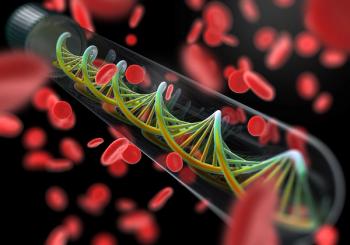
Targeted Next-Generation Sequencing in Lung Cancer Yields Quick, Actionable Results
A study of next-generation genetic sequencing found the techniques to be feasible and useful in NSCLC patients, producing actionable results in a large proportion of patients.
A study of next-generation genetic sequencing found the techniques to be feasible and useful in patients with non–small-cell lung cancer (NSCLC), producing actionable results in a reasonably large proportion of patients and in acceptable amounts of time.
In current practice, NSCLC patients are often sequenced using single-gene testing to look for EGFR, ALK, ROS1, and other mutations with predictive or prognostic value. “Serial testing takes time and depletes tumor tissue. In addition, the cost of single-gene methods scales linearly with the number of genes interrogated,” wrote study authors led by Ian S. Hagerman, MD, PhD, of Washington University in St. Louis. Whole genome or whole exome tumor testing is also a possibility, though high cost and other factors limit its use. “Targeted next-generation sequencing (NGS) of cancer-related genes permits unbiased variant detection of commonly altered genes on a single platform.” The study was
In this study, 209 samples from 381 consecutive NSCLC patients (55%) were successfully analyzed using targeted sequencing of 23 specific genes. The testing was performed using DNA from formalin-fixed, paraffin-embedded (FFPE) tumor tissue. Among those patients for whom sequencing was not completed, the most common reason for that failure was an insufficient quantity of available tissue (29%).
The median turnaround time in the pathology laboratory was 21 days, with a trend toward improved turnaround time with more rapid sequencing platforms. Almost half of the sequenced samples (46%) yielded potentially actionable mutations, meaning mutations that are known to have predictive or prognostic value. The most common mutation was in the KRAS gene, in 28% of patients; this was followed by EGFR mutations in 14%, PIK3CA in 4%, PTEN in 1%, and mutations in BRAF in 1%.
Five percent of the sequenced samples had multiple actionable mutations, and targeted therapy based on the sequencing results was initiated in 11% of the sequenced patients (6% of all patients). Fifty-three percent of those with sensitizing EGFR mutations received such matched therapy.
“NGS-based diagnostics can provide clinically relevant information from readily available FFPE tissue, but both the success rate of sequencing and the utility of the results may be lower in real-world clinical practice vs an experimental setting,” the authors concluded, adding that methods are needed to accurately assess the clinical benefit as well as the costs associated with this type of tumor sequencing. “The impact of NGS-based diagnostics is likely to be greater with the increasing availability of novel molecularly targeted agents as well as improved informatics allowing calling of more variant types.”
Newsletter
Stay up to date on recent advances in the multidisciplinary approach to cancer.
















































































